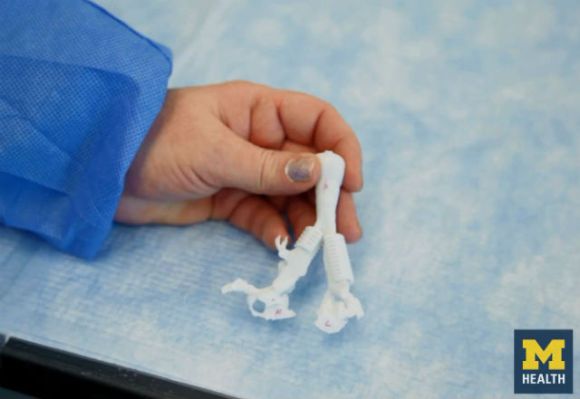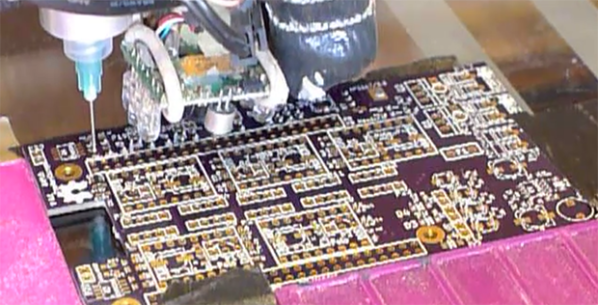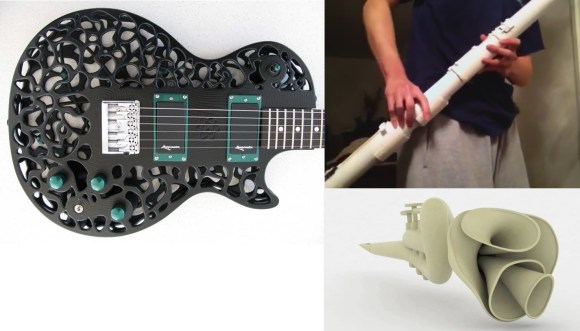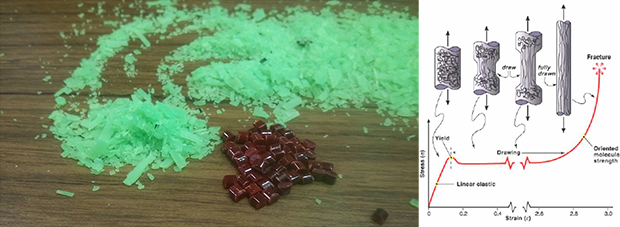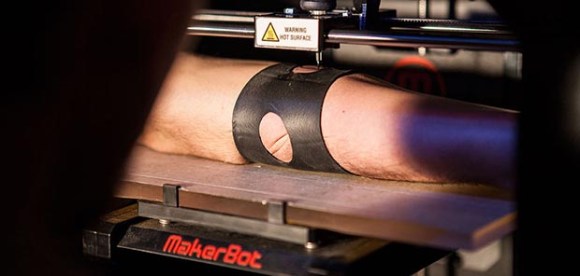
ENSCI les Ateliers, the famous design school in Paris, had a “Public Domain Remix” and hackathon recently, with teams splitting up to remix public domain and other free-to-use IP in projects. Most of the teams came up with similar ideas, but one team went above and beyond the call of duty; they turned a 3D printer into a tattoo machine, capable of inking a real, live human test subject.
The build began by plotting a circle with a pen onto a piece of paper. This evolved into printing a tool holder for a tattoo machine graciously provided by an amateur tattoo artist. Tests with “artificial skin” (any one care to hazard a guess at what that is?) were promising, and the team moved on to a human guinea pig.
The biggest problem the team faced is that humans aren’t flat. They tried a few tricks to tighten the skin around the area to be tattooed – metal rings, elastics, and finally the inner tube from a scooter. In the end, the team was able to tattoo a small circle on the forearm of the test subject.
It’s an extremely simple and small tattoo, and scaling this build up to a sleeve would be difficult. A better solution would be to create a point cloud of an arm before going for a much larger tattoo.
Continue reading “Turning The Makerbot Into A Tattoo Machine”

